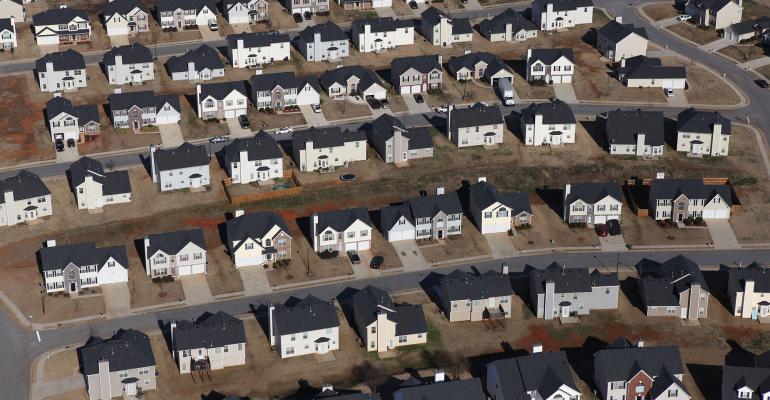Quinn Residences, a single-family rental (SFR) real estate investment company based in Atlanta, has raised nearly $1 billion from investors eager to back Quinn’s plan to develop and operate new subdivisions of rental houses.
"Based on the company's success to date, and our confidence in its future, we are delighted to have deepened our partnership with Quinn,” says Michael Simanovsky, founder and managing partner of Conversant Capital, the private investment advisor that organized Quinn’s capital raise.
Quinn is already using the money to build on its portfolio of rental houses. In January 2022, it announced plans to buy six more single-family rental developments throughout Georgia, Florida and the Carolinas. Quinn has partnered with local development partners who will build the communities, increasing its portfolio by more than 50 percent, to nearly 2,300 homes across 17 sites.
WMRE caught up with Quinn President Richard Ross to discuss the firm’s growth strategy.
This interview has been edited for style, length and clarity.
WMRE: Why has Quinn drawn so much interest from equity partners?
 Richard Ross: The company was founded based on all the demographic trends that have been happening over the last five to 10 years of aging Boomers, aging Millennials, people starting families and needing more space—all of the things that you read about pre-COVID. And then COVID came along and poured gasoline on all those trends.
Richard Ross: The company was founded based on all the demographic trends that have been happening over the last five to 10 years of aging Boomers, aging Millennials, people starting families and needing more space—all of the things that you read about pre-COVID. And then COVID came along and poured gasoline on all those trends.
We initially started out with plans to raise $250 million of equity. We raised an initial round of $100 million, got to $250 million and with all of the acceleration from COVID and all of the hubbub in the capital markets we were able once we proved our concept to bring that equity to just under $1 billion, just over $905 million—just over four times what we started out with—which will allow us over the next three to five years to acquire and operate about 10,000 homes.
WMRE: What surprised you as you did your fundraising?
Richard Ross: Purpose-built communities for rent are a very, very new concept. And I was surprised at the appetite for this product among very, very sophisticated private investors. I think the original biggest question was: Is this concept viable, and we have certainly proven that. Now the question most are asking is: “How much runway is there? How big can this industry get?”
If you look at the demographics and the statistics, I don’t think there is a real cap on it. If you look at the Census data, there is a four or five million unit home shortage in this country because as we came out of the housing crisis, they were not building homes.
WMRE: To show that demand, you would probably point to your occupancy rates in the high 90s and your rent growth of over 10 percent? What else would you point to?
Richard Ross: We would point to resident satisfaction. We poll our residents and they like the privacy. They like the lifestyle. And the stay in these homes an average of three years. That says a lot.
WMRE: Who are your renters?
Richard Ross: When we started out I would have told you that the majority of our residents would be couples in their early to mid-30s leaving a traditional two-to-three-bedroom apartment and moving into a home because they are about to have their first child, they have dog or two and they want more space. Probably a third of our residents fall into that category. But if you had asked me a year or two ago I would have said three-quarters.
What has been a little bit of a surprise has been the number of our renters who have been renters by choice. They don’t need or want to buy a home. They want flexibility. They want a maintenance-free lifestyle. About a third of our renters fit into that bucket.
There is some number, maybe a third, maybe 20 percent, who are empty nesters.
We are pretty conservative on our resident profiling and we knew that our resident make nearly three times their rent. Our average is five times. We felt very comfortable going into COVID that our business model would be sustainable. And that proved out pretty quickly.
WMRE: How long do investors leave their money with you?
Richard Ross: The investment horizon is a matter of four to five years. But they are long-term holders. This is not something to turn a quick buck, which sometimes private equity is known for. The majority of our investor partners are in it for the long haul.
WMRE: How big are your houses?
Richard Ross: They average anywhere from 1,700 to 2,400 sq. ft. and the rents average $1,600 to $2,500. The price point if you were going to buy a home like this would be between $275,000 and $300,000.
WMRE: Are they scattered site?
Richard Ross: No. These are contiguous communities. Our smallest has 33 homes. Our sweet spot is 150 to 250 homes all built for rent. It is what just would typically see in a suburban market, what you would call a subdivision.
WMRE: What questions are you still answering about how single-family rental houses work?
Richard Ross: I spend a lot of my time educating communities about what single-family rental means in a given community. There is a certain amount of backlash or NIMBYism. They say, “I don’t want a whole lot of renters in my little town in North Carolina.” What I say is that we are professional managers. Our resident qualifications are higher than most homebuyers. That is the single biggest challenge for us. Not just Quinn. It’s for everyone in this industry.





